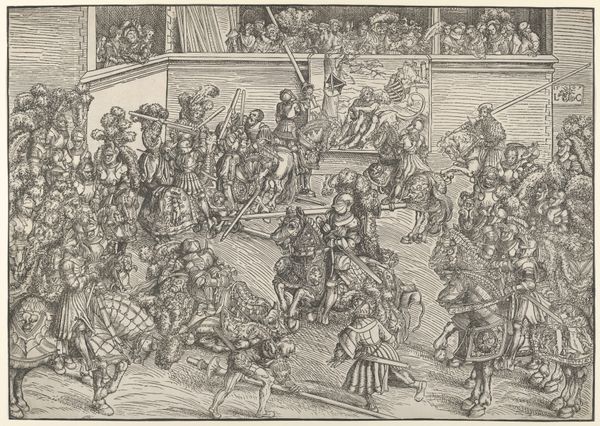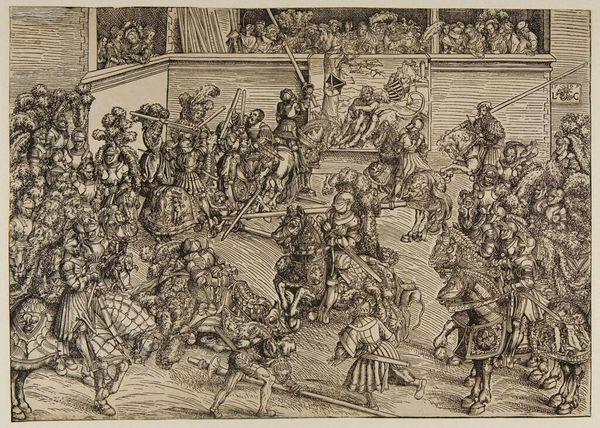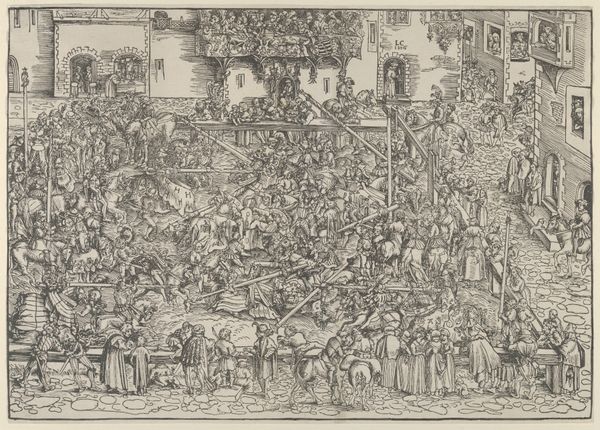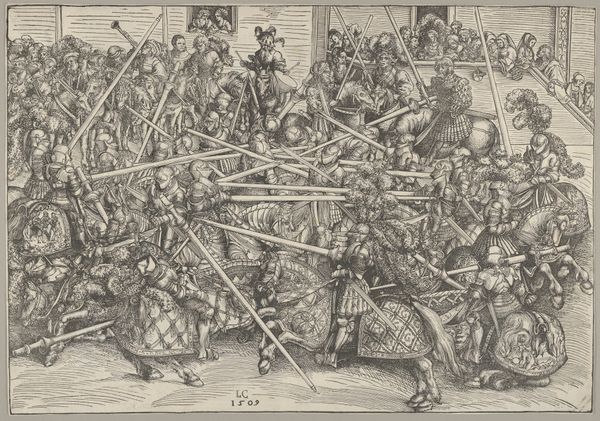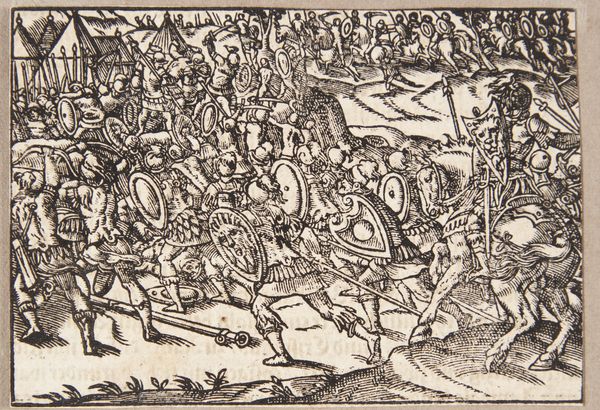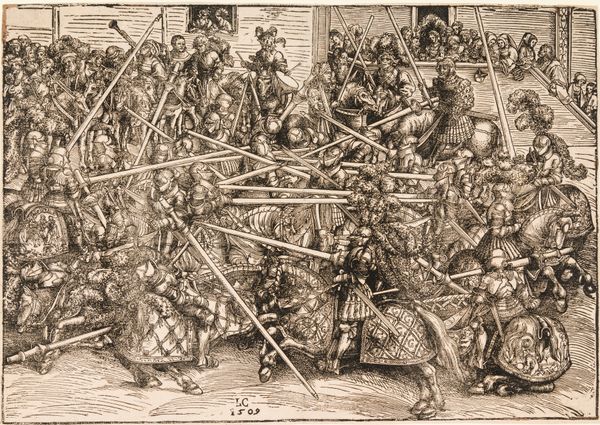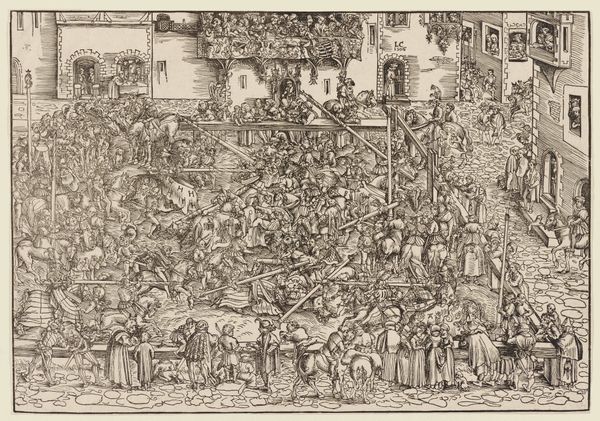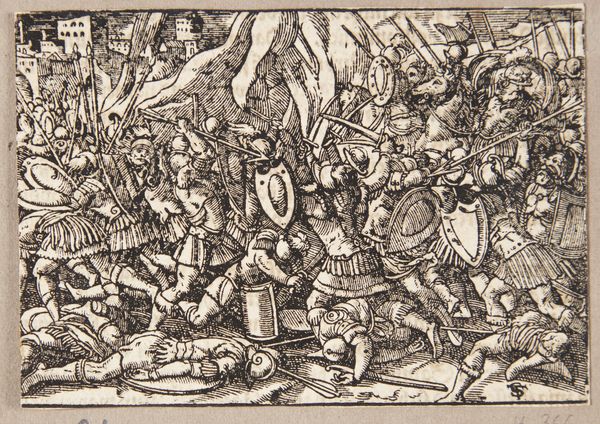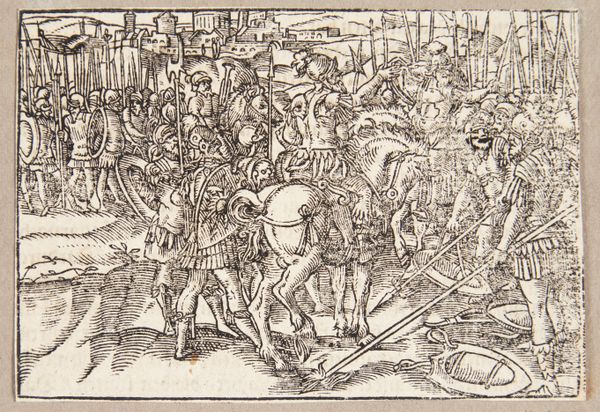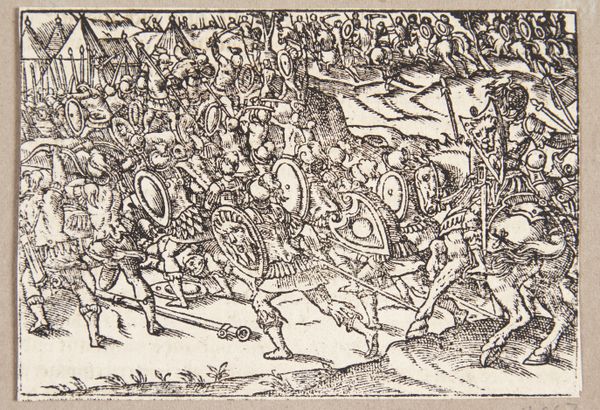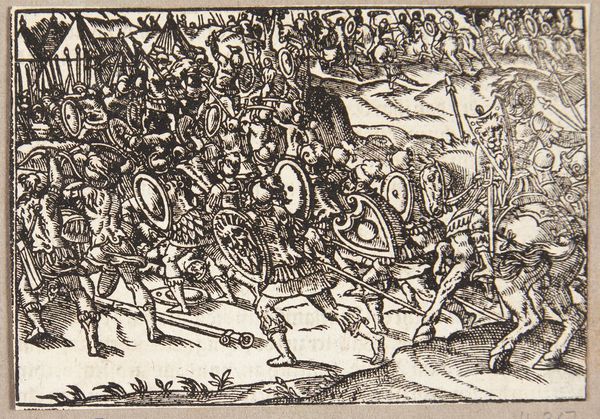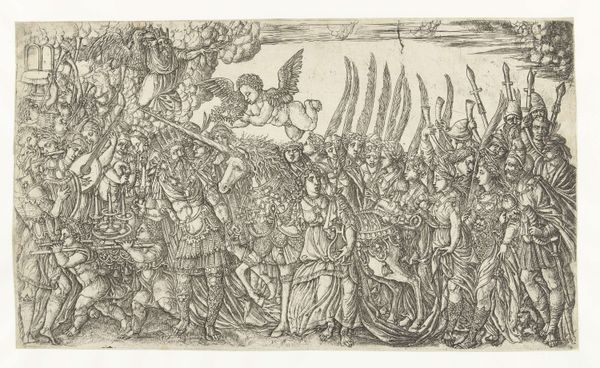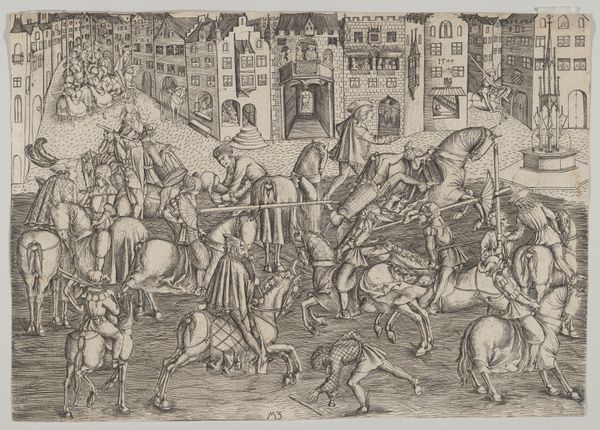
The Second Tournament with Tapestry of Samson and the Lion 1509
0:00
0:00
print, woodcut
# print
#
figuration
#
woodcut
#
pen work
#
genre-painting
#
history-painting
#
northern-renaissance
Dimensions: 11 9/16 x 16 1/2 in. (29.37 x 41.91 cm) (image)
Copyright: Public Domain
Curator: Wow, that's… intense. All those armored figures, the flurry of lances...It’s almost claustrophobic in its detail. Editor: Indeed. What you’re seeing is "The Second Tournament with Tapestry of Samson and the Lion" a woodcut made in 1509 by Lucas Cranach the Elder. It depicts, quite literally, a jousting tournament. Curator: It definitely conveys the spectacle. But it’s more than just documentation, right? It feels… charged. I mean, the sheer masculinity practically radiates off the print. Who was the intended audience and what statements could be the artist wanting to make with it? Editor: A relevant reading indeed. The work's power resided not just in commemorating an event but also reinforcing social hierarchy. Tournaments were displays of aristocratic power. Cranach's position in the court of Frederick the Wise made him perfectly situated to craft images legitimizing this power structure. Remember, the Reformation was brewing, so reaffirming traditional authority was key. Curator: Right, and the choice of the Samson tapestry is intriguing. Samson, the ultimate symbol of physical strength, overseeing a competition testing...physical strength. But it’s also about masculine vulnerability, isn’t it? Samson’s strength leads to his downfall. Are there are parallels intended? It reminds of discussions around hegemonic masculinity today. Editor: Possibly, although I'd argue the direct message leans more towards celebrating martial prowess. This print circulated amongst a specific group of people within a politically charged period in Europe: rulers and nobleman looking for art that reasserted tradition as much as personal value and prowess. That being said, I see your point about it opening a valuable discussion that relates back to contemporary dialogues around patriarchal values. Curator: Looking at it now, I notice how much detail is given to the ornamentation and heraldry. Every crest, every flourish seems significant. It seems so far away removed from art making that privileges the personal over the professional. Editor: The commission aspect shouldn't be ignored. I agree that seeing these traditions placed within their relevant socio-historical timeframe invites reflections. Curator: Agreed. Thanks for illuminating its context for me. Editor: My pleasure, the intersectionality of this piece really has legs to stretch to present day issues.
Comments
minneapolisinstituteofart almost 2 years ago
⋮
Here we see a jousting tournament that took place on the Wittenberg town square, November 15 and 16, 1508. Elector Frederick the Wise of Saxony staged such courtly festivals for amusement, but they also provided opportunities for elite families to meet and show off their wealth. The combatants and their mounts are heavily armored for competitions involving lances, swords, and batons. Though militarily these staged conflicts were outdated remnants of an earlier age, the collapse of a horse and rider recalls the intensity of battle.
Join the conversation
Join millions of artists and users on Artera today and experience the ultimate creative platform.
